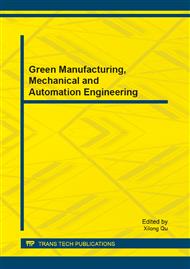p.31
p.37
p.42
p.50
p.55
p.59
p.64
p.69
p.75
Measures for Controlling the Steel Support Welding Quality of Building
Abstract:
Along with the rapid development of the construction industry, the buildings in China will certainly change from the traditional architecture buildings to the new architecture buildings, so as to fulfill the demands of people on living or production. In order to ensure the lasting play of building functions, it is necessary for the construction units to comprehensively control the welding quality of steel supports. In this paper, the application characteristics of steel structure buildings is first analyzed, and accordingly the measures for controlling the steel support welding quality of buildings and the application of the steel support welding reinforcement technology are proposed. It is hoped that this paper can give a help to the follow-up studies.
Info:
Periodical:
Pages:
55-58
Citation:
Online since:
July 2013
Authors:
Keywords:
Price:
Сopyright:
© 2013 Trans Tech Publications Ltd. All Rights Reserved
Share:
Citation:


